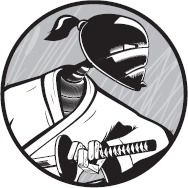If you are working with Rails, you will need to install a database. Although quite a few choices are available to you, one of the most widely used is MySQL. If you’ve never used MySQL before, you may find some of the setup options confusing. Here, I’ll try to guide you through the process to avoid potential problems. The MySQL main site is at http://www.mysql.com/, where you can navigate to the download page for various versions.
Note
This appendix is based on an installation of MySQL 5.0 under Windows. There may be differences when installing other versions on other operating systems. Refer to the MySQL site for additional guidance.
I will assume you will be using the free edition of MySQL. This is available for download from http://dev.mysql.com/downloads/. The current version, at the time of writing, is MySQL 5 Community Server. The name and version number will, of course, change over time. Download whichever is the current (not an upcoming, alpha, or beta) release. Choose the specific version recommended for your operating system (there may be different versions for Win32 and Win64, for example).
You will need to locate the installer for your operating system. For Windows, you can download either the complete MySQL package or, if available, the smaller Windows Essentials package. The complete package contains extra tools for database developers, but these are not required for simple Rails development. For most people, therefore, the smaller Windows Essentials download file is the one to get. You may be asked to select a mirror site, and you may also be shown a questionnaire, which you can fill out if you want.
